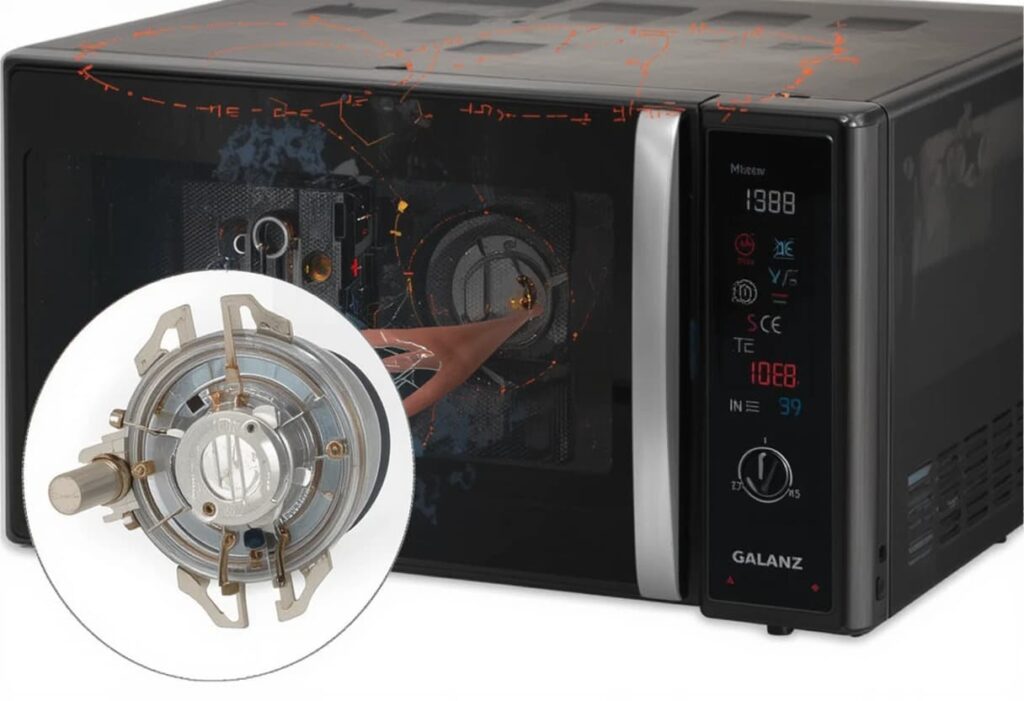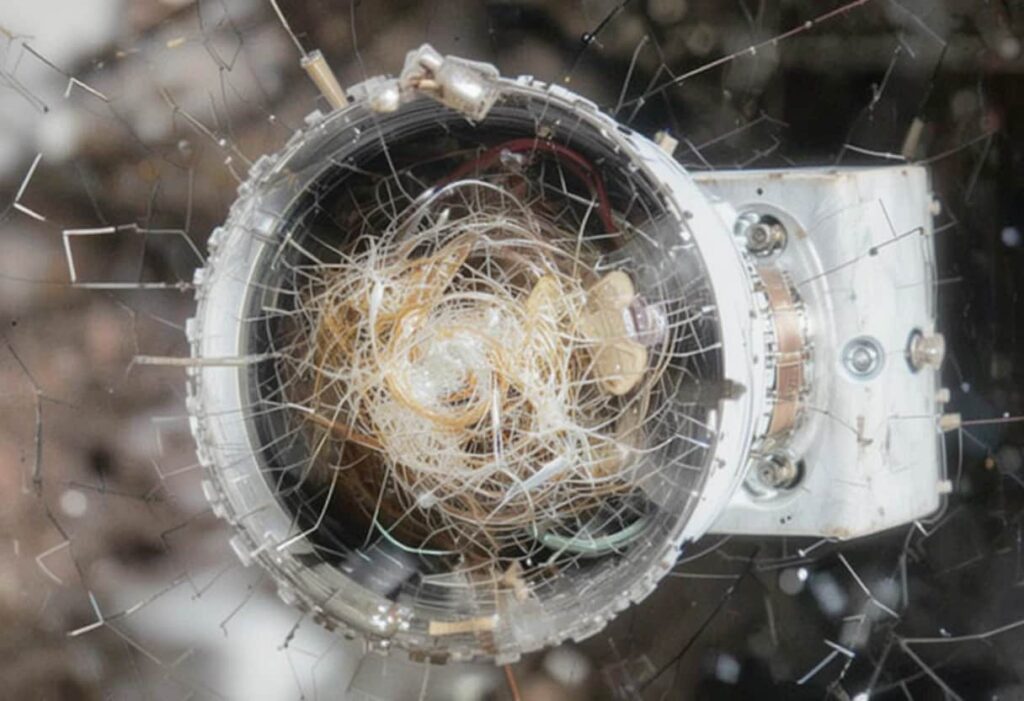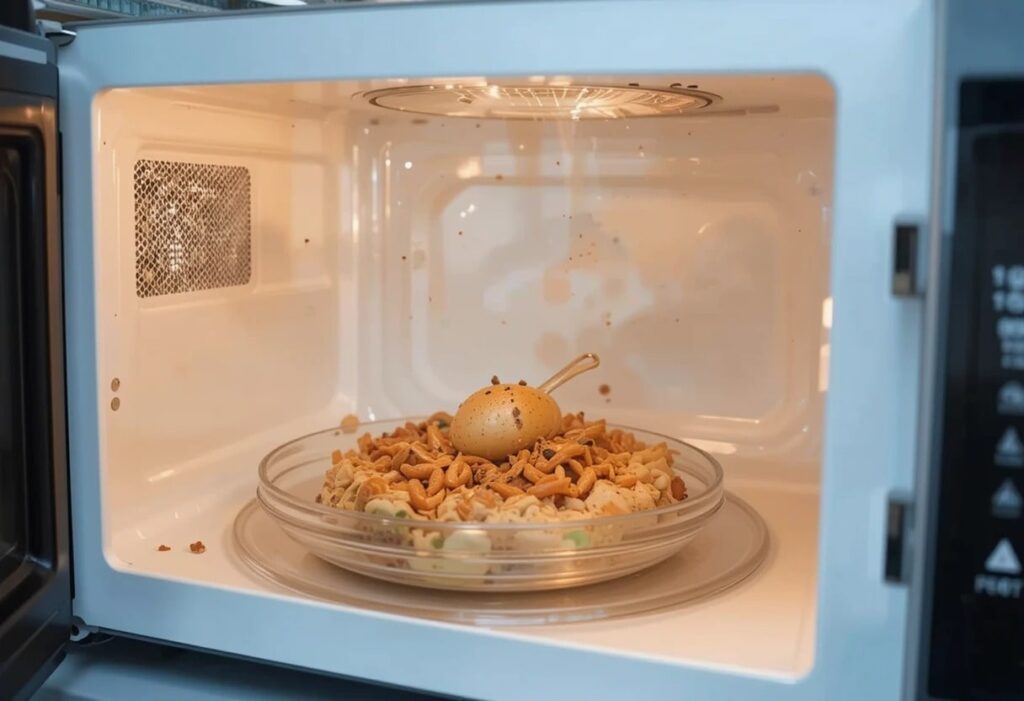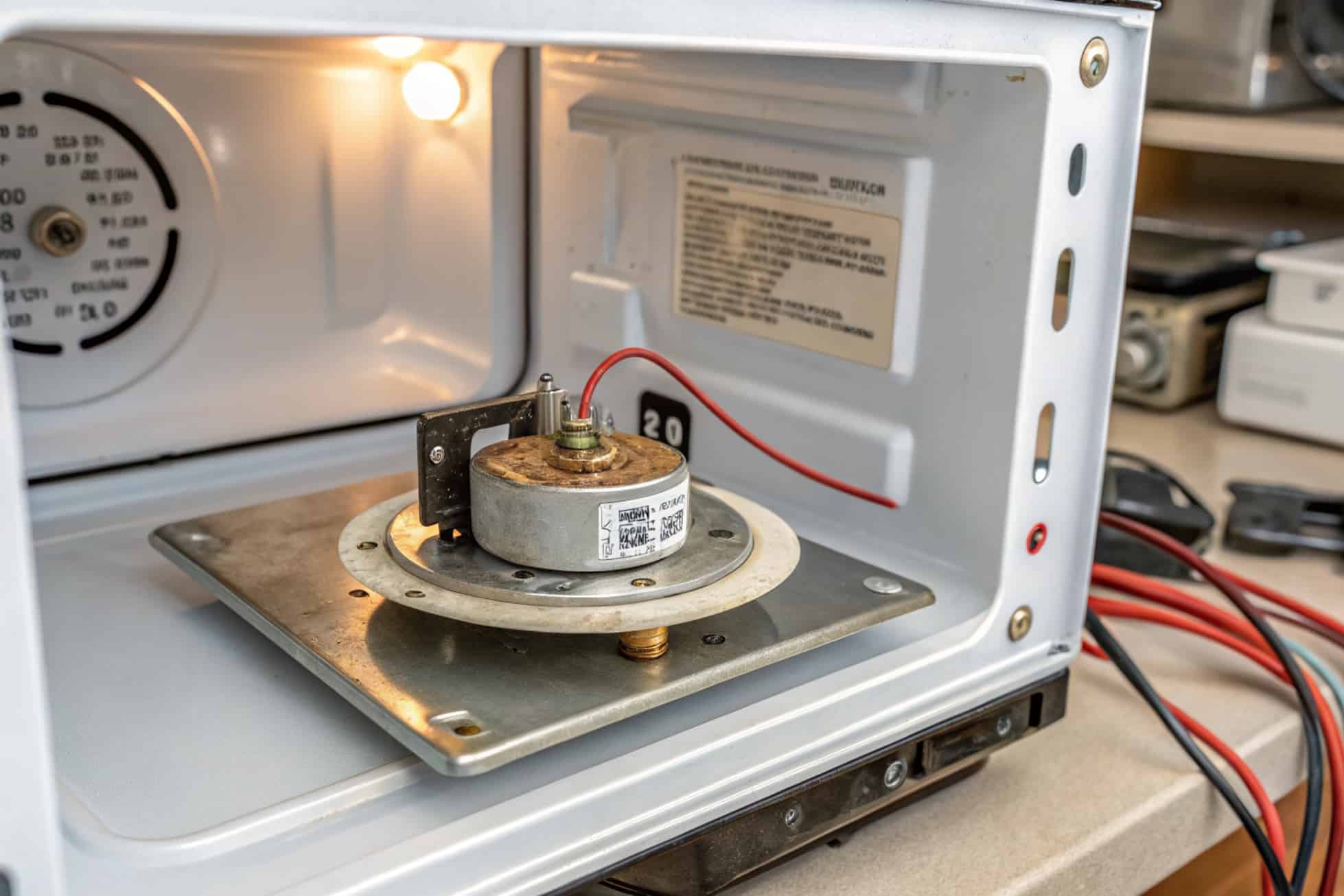In today’s modern kitchens, the microwave oven stands out as a must-have for quick and efficient cooking. Galanz, a trusted name in affordable home appliances, has earned its reputation by delivering reliable and innovative microwave models.
At the heart of many Galanz microwaves lies the KSD301 thermostat — a compact yet essential component responsible for managing internal temperatures. It acts as a thermal safeguard, protecting the appliance from overheating while ensuring consistent performance. This tiny part plays a major role in maintaining both user safety and long-term appliance functionality.
What Is the Role of the KSD301 in Galanz Microwaves?
At its core, the KSD301 is a bimetallic temperature control switch that operates on a simple but effective principle. It monitors internal appliance temperatures and reacts instantly when those temperatures exceed safe thresholds.

As temperatures rise, the thermostat’s internal bimetal disc bends and clicks, opening or closing the electrical circuit depending on whether it’s designed to cut off or allow power flow. Once the temperature stabilizes and returns to a safer range, the thermostat resets itself, ensuring a seamless user experience.
This action may sound mechanical, but it’s deeply important. It not only protects the microwave’s key components — such as the magnetron, power transformer, or control board — but it also prevents the risk of fire, short circuits, or irreversible electrical damage.
What Are the Core Functions of the KSD301 Thermostat?
The KSD301 thermostat might be small in size, but it plays a major role in keeping your Galanz microwave safe and efficient. Let’s explore the key things this component does behind the scenes:
- Prevents Overheating: When internal temperatures rise beyond a safe level, the thermostat steps in and cuts off the power, preventing any risk of overheating.
- Automatically Resets: Once things cool down, the KSD301 resets on its own, allowing the microwave to function normally again without user input.
- Protects Critical Components: This is especially important for parts like the magnetron, which can be permanently damaged if exposed to excessive heat.
- Ensures Safety Compliance: It helps the appliance stay in line with international safety standards, offering peace of mind to users.
So, even though you’ll probably never see it working, the KSD301 is constantly watching over the system — quietly keeping everything running smoothly and safely.
What Are the Technical Details of the Galanz KSD301 Part?
Here’s a breakdown of technical attributes that define this part:
| Specification | Detail |
| Type | Bimetal Thermostat |
| Temperature Range | 60°C to 180°C |
| Function | Overheat Protection |
| Reset Mechanism | Automatic |
| Electrical Rating | Commonly 10A, 250V |
| Mounting | Snap-disc, Screw-on |
| Status When Idle | Normally Closed (NC) |
Most Galanz microwaves use a KSD301 rated at 105°C, meaning it activates when that temperature threshold is reached internally.
Where Is the KSD301 Located in a Galanz Microwave?
Generally, you’ll find the KSD301 mounted close to the magnetron, cavity wall, or high-voltage transformer — the areas most likely to experience temperature spikes. It’s attached using screws or a mounting bracket and connects directly to the microwave’s internal wiring.
This strategic placement allows it to directly measure the heat output from high-load components and instantly interrupt power flow when necessary.
How Can You Identify Common Faults in a Failing KSD301?

Even though the KSD301 thermostat is designed for long-term use, like all electrical components, it can eventually wear out. Factors such as power surges, prolonged overheating, or simply aging over time can lead to failures.
So, how can you tell if this little part is starting to cause problems in your Galanz microwave? Here are some warning signs to look out for:
- Microwave shuts off during use: If your microwave randomly powers down in the middle of a cycle, a faulty KSD301 could be cutting the circuit too early.
- No heating, but lights work fine: This is a classic sign that the microwave’s internal safety switch is preventing power from reaching key heating components.
- Burning smell or heat damage: Unusual smells coming from the appliance may point to overheating caused by a malfunctioning thermostat.
- Unstable performance: If the microwave works intermittently or stops after just a few minutes, the KSD301 might be failing to regulate temperature properly.
- Physical damage: Corrosion, rust, or burn marks near the thermostat are strong indicators that it needs replacement.
In most cases, replacing the KSD301 is a quick and affordable fix — far more efficient than attempting to repair it. Plus, since diagnosing internal thermostat issues can be complex and involve high-voltage parts, it’s often safer to swap in a new one rather than troubleshoot a faulty unit.
Should You Replace the KSD301?
Unplug the Microwave:
Before doing anything, unplug the microwave from the wall. Microwaves contain high-voltage components that can still hold a charge. Disconnecting the power is the first and most important safety step to prevent electric shock while working on any internal parts, including the KSD301 thermostat.
Discharge the Capacitor:
Even when unplugged, the microwave’s capacitor can store dangerous voltage. Use a resistor oran insulated screwdriver (only if trained) to safely discharge it. Skipping this step can lead to serious injury, so it’s crucial. If you’re unsure how to do this properly, stop and call a qualified technician.
Locate the KSD301:
Open the microwave’s back panel carefully to locate the KSD301 thermostat. It’s often mounted near the magnetron or transformer, attached to a metal surface with screws and wires. Identifying its location correctly is key to replacing the right part and avoiding any unnecessary damage to nearby components.
Replace with Identical Part:
Always replace the KSD301 with an identical unit — matching temperature rating, type (normally closed), and mounting style. Using the wrong thermostat can result in overheating or appliance failure. Genuine Galanz parts are recommended to ensure performance, safety, and continued warranty coverage.
Test After Reassembly:
Once the new thermostat is installed and everything is reconnected, reassemble the unit and plug it back in. Test the microwave with a short heating cycle. If it operates normally without shutting down or overheating, the installation was successful. If not, consult a technician for further inspection.
Which Galanz Microwave Models Use the KSD301 Thermostat?
While the KSD301 thermostat follows a fairly standard design, its exact specifications can vary slightly depending on the microwave model. That’s why it’s important to match the part with your unit.
Some commonly compatible Galanz models include:
- Galanz MWG1031BSA
- Galanz GLCMKA07BER-07
- Galanz GLCMKA07RDR-07
- Galanz GTWHG12S1SA10
- Galanz GLCMKZ07BER07
To avoid mismatches, always refer to your microwave’s user manual or model label before buying a replacement.
Where to Buy Genuine Galanz KSD301 Thermostats
To ensure long-term performance and maintain your microwave’s warranty, it’s important to buy only genuine Galanz KSD301 thermostats. Reliable sources such as GalanzParts.com, BuySpares UK, Spares4Dometic, and Amazon (especially from trusted brands like Uxcell) offer various models, including KSD301 thermostats rated at 85°C, 105°C, and 150°C.
These platforms list temperature settings, mounting styles, and compatibility details, making it easier to find the exact match for your Galanz microwave. Choosing authorize
How Can You Extend the Lifespan of the KSD301 Thermostat?

- Never run the microwave empty: Operating an empty microwave causes energy to bounce around with no food to absorb it. This results in rapid internal heating, which can strain or damage the KSD301 thermostat and reduce the overall life of your appliance.
- Ensure proper ventilation: Microwaves need space around them to release heat. Placing your appliance in a cramped area can lead to overheating. This forces the thermostat to work harder, increasing wear and the risk of failure over time, especially during repeated use.
- Clean vents and fans monthly: Over time, dust and food particles build up in the vents and internal fan areas. This blocks airflow, traps heat, and causes components like the KSD301 to overwork. Regular cleaning keeps temperatures balanced and the appliance functioning efficiently.
- Use only microwave-safe containers: Using the wrong containers, such as metal or low-quality plastic, can cause uneven heating or spark damage. This puts unnecessary pressure on internal sensors like the KSD301, increasing the risk of heat mismanagement and early part failure.
- Avoid high-fat or oversized meals: Large portions or oily foods create more heat and steam inside the microwave. This forces the KSD301 to regulate higher temperatures more frequently, potentially leading to early wear or overheating shutdowns if used excessively over time.
FAQs:
1. Can a faulty KSD301 cause my microwave to stop heating properly?
Yes, if the KSD301 fails, it can cut power to the magnetron, which generates heat. Even if lights and timers work, the microwave won’t heat. This safety feature may activate unnecessarily if the thermostat malfunctions, making heating unreliable or stopping it completely during normal operation.
2. Is it safe to use a generic KSD301 in a Galanz microwave?
Using a generic KSD301 is risky if it doesn’t match Galanz specifications. The wrong temperature rating or build quality could affect performance, cause overheating, or void your warranty. It’s always safer to use a genuine or compatible replacement part specified by the manufacturer for your exact microwave model.
3. How often should I inspect or replace the KSD301 thermostat?
There’s no fixed timeline, but inspect it if you notice heating issues, shutdowns, or strange smells. Under normal use, the KSD301 can last for years. Still, periodic checks during routine appliance servicing can help catch potential failures early and extend your microwave’s lifespan with proper maintenance.
4. Can I test the KSD301 with a multimeter?
Yes, you can test it using a multimeter set to continuity. At room temperature, a normally closed KSD301 should show a complete circuit. If it reads open or reacts inconsistently, the part may be faulty and should be replaced to restore proper temperature control in your microwave.
5. What temperature rating should I choose for a replacement KSD301?
Always match the original thermostat’s temperature rating, usually printed on the part. Common ratings are 85°C, 105°C, or 150°C. Using the wrong one can result in early shutdowns, overheating, or poor protection. Stick with the exact spec to keep your microwave running safely and efficiently.
Conclusion:
The Galanz microwave parts KSD301 thermostat is a small but vital component that plays a major role in protecting your appliance from overheating and ensuring safe, consistent performance. Understanding its function, common issues, and replacement process can help you maintain your microwave more effectively.
By using genuine parts, following safe practices, and performing routine maintenance, you can extend the lifespan of both your thermostat and microwave. Whether you’re a technician or a homeowner, staying informed about the KSD301 gives you better control over the long-term health of your Galanz appliance.
Related post:
- Replacement For Ge Microwave Jkp86sof2ssmodel – Cheapest, Smartest, Fastest Solutions!
- Goldstar Microwave Model Er654m Manual Troubleshooting – Solve Common Problems Fast!
- Aluminum Paper In Microwave – Avoid These Dangerous Mistakes!
